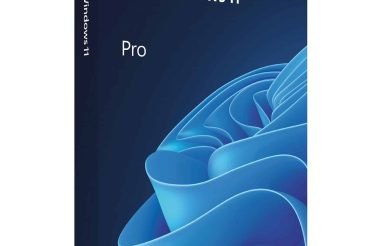Streamline IT Operations with IT Asset Management System and Oracle BYOL Integration
In today’s digital-driven business environment, companies increasingly depend on software, hardware, and cloud-based solutions to remain competitive. Managing these IT assets efficiently becomes a critical function, especially for enterprises that use large-scale enterprise software like Oracle. The key to optimizing usage, maintaining compliance, and minimizing costs lies in an effective IT Asset Management System. When paired with Oracle’s “Bring Your Own License” (BYOL) model, organizations can unlock significant value by leveraging existing licenses in flexible environments, particularly in cloud deployments.
Understanding the IT Asset Management System
An IT Asset Management System (ITAM) refers to the structured process of tracking and managing all IT assets across their lifecycle—right from procurement to disposal. This includes hardware like servers, desktops, and mobile devices, as well as software licenses, cloud subscriptions, and service agreements. By offering visibility, control, and data-driven decision-making, ITAM empowers organizations to optimize resource allocation, ensure regulatory compliance, and avoid unnecessary expenditures.
Key components of a robust IT Asset Management System include:
-
Asset Discovery and Inventory
Automatic detection and real-time inventory of assets across the network help create an accurate IT ecosystem map. -
License Management
This function helps monitor the usage of software licenses and ensure compliance with vendor agreements, which is particularly important for enterprise platforms like Oracle. -
Lifecycle Management
ITAM tracks assets throughout their lifecycle stages—acquisition, deployment, usage, maintenance, and retirement—to optimize their value. -
Compliance Monitoring
With constantly changing software licensing terms, especially from major vendors, an ITAM system ensures adherence to compliance mandates and avoids costly audits.
The Role of Oracle BYOL in Cost Optimization
Oracle’s Bring Your Own License (BYOL) model is a flexible licensing arrangement that enables organizations to reuse their on-premises Oracle licenses in cloud environments, including Oracle Cloud Infrastructure (OCI), Amazon Web Services (AWS), or Microsoft Azure. This means companies don’t need to purchase new cloud-specific licenses—they can simply bring their existing ones, resulting in significant cost savings.
BYOL supports a variety of Oracle products, such as:
-
Oracle Database
-
Oracle WebLogic Server
-
Oracle Middleware
-
Oracle Analytics
-
Oracle Enterprise Manager
Organizations leveraging Oracle BYOL can drastically reduce cloud adoption costs while maintaining licensing compliance. However, this flexibility also comes with complexity. Ensuring that BYOL licenses are used appropriately and within the terms of Oracle’s policies requires detailed visibility and control—something a modern IT Asset Management System can provide.
How IT Asset Management Systems Empower Oracle BYOL Users
The integration of an IT Asset Management System with Oracle BYOL delivers tremendous operational and financial benefits. Here’s how:
1. Centralized License Visibility
A comprehensive ITAM system offers a unified view of all Oracle licenses—both on-premises and in the cloud. This helps organizations accurately assess how many licenses they have, how many are in use, and where they are deployed.
2. Real-Time Usage Tracking
BYOL agreements have strict terms regarding usage—such as the number of CPUs, core factors, and user counts. ITAM tools can track real-time consumption and flag any non-compliant usage that might result in costly penalties during Oracle audits.
3. Cost Forecasting and Optimization
With built-in analytics, ITAM systems can forecast future license needs and help optimize usage. Businesses can thus make strategic decisions—like retiring underutilized licenses or reallocating them to more productive workloads in the cloud.
4. Simplified Audit Preparedness
Oracle frequently audits customers to ensure license compliance. An IT Asset Management System provides audit-ready reports and documentation, minimizing the risk of financial surprises.
5. Automated License Reconciliation
When new systems are deployed, especially in cloud environments, ITAM tools can automatically reconcile those deployments with available Oracle BYOL licenses to prevent over-provisioning or underutilization.
Best Practices for Combining IT Asset Management with Oracle BYOL
To fully benefit from an IT Asset Management System and Oracle BYOL, organizations should follow these best practices:
-
Inventory All Oracle Software: Conduct a complete inventory of all Oracle software deployments and licenses. Ensure everything is documented and verified.
-
Tag BYOL Assets Separately: In cloud platforms, BYOL-licensed instances should be clearly tagged for easy identification and management.
-
Use ITAM Tools with Oracle Integration: Choose an IT Asset Management System that natively integrates with Oracle products and cloud services.
-
Regularly Audit License Usage: Schedule internal audits to monitor and reconcile license usage against BYOL terms.
-
Train Your IT Team: Ensure the IT operations team understands Oracle licensing models and knows how to track and manage them effectively using ITAM tools.
Future of ITAM and Oracle Licensing
As cloud migration continues to accelerate, the relevance of both IT Asset Management Systems and Oracle BYOL will only grow. Oracle is expanding its licensing programs to support hybrid environments and multi-cloud strategies, and businesses must keep pace by adopting agile ITAM solutions.
In the near future, AI and automation will further enhance ITAM systems, offering predictive license management, automatic compliance alerts, and intelligent asset optimization. Integrating these advanced features with Oracle BYOL will empower organizations to stay compliant, avoid financial risks, and get the most from their technology investments.
Conclusion
By integrating a powerful IT Asset Management System with the flexibility of Oracle BYOL, organizations can achieve greater efficiency, cost control, and compliance. This synergy not only helps businesses manage their Oracle assets more effectively but also ensures smooth transitions to cloud environments. Whether you’re a growing enterprise or a large corporation, this strategic combination is key to maximizing ROI and future-proofing your IT landscape.







